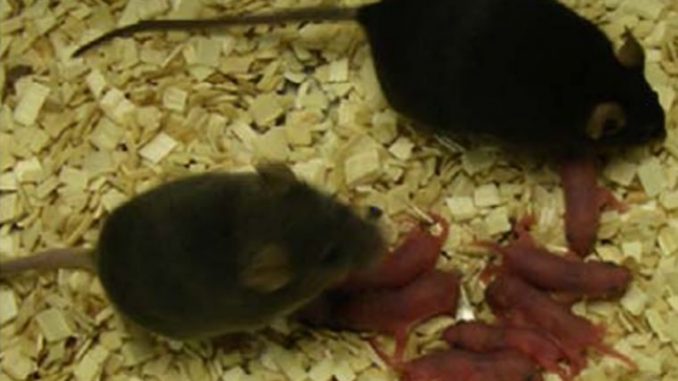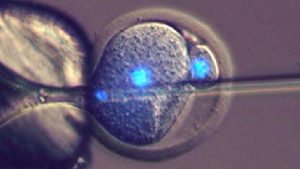
Scientists in the UK have found a method of creating offspring without using female eggs.
In an experiment at Bath University scientists successfully created healthy baby mice using sperm that was injected directly into modified, inactive mouse embryos rather than from a fertilized egg cells.
 International Business Times reports:
International Business Times reports:

BYPASS THE CENSORS
Sign up to get unfiltered news delivered straight to your inbox.
You can unsubscribe any time. By subscribing you agree to our Terms of Use
Latest Video
This is the first time offspring have been born without egg cells, suggesting the process of fertilisation is more complicated than we once thought.
It is important to be clear – an egg was required for the mice to be born. In their study published in Nature Communications, scientists started with an egg and created an artificial signal to make it develop into an embryo. Normally, these embryos – parthenogenotes – die after a few days because they need sperm to continue the developmental process.
However, researchers were able to inject sperm into the parthenogenotes to allow fertilisation. Moreover, the fertilised embryos resulted in healthy mice being born in 24% of the experiments.
Tony Parry, a molecular embryologist and senior author of the paper, said: “This is first time that full term development has been achieved by injecting sperm into embryos. It had been thought that only an egg cell was capable of reprogramming sperm to allow embryonic development to take place.”
The importance of the egg
Before this research, popular thinking was that only an egg cell fertilised with a sperm could result in a live mammalian birth. Speaking to IBTimes UK, Parry said it is important to see the distinction between an egg and an embryo.
In normal fertilisation, an egg joins with sperm and repackages it in a process known as reprogramming: “It’s telling the sperm to top being a sperm and start being an embryo. This is something thought to be unique to an egg – that only an egg could do it.
“All of these changes were thought to be unique to eggs. What we’ve shown that it’s not – that an embryo cell can do the same remodelling, the same reprogramming. A cell that’s much more like dividing cells in body can do sperm reprogramming, it’s a completely new idea. It challenges 200 years [of thinking] and gives us a new avenue to try and understand what happens in natural fertilisation.”
Uncertain future
Parry said it is “extraordinary” behaviour. “After sperm and egg cells have been produced, then their fate is to die. They will die unless they can combine in fertilisation. Then not only do they not die, but they produce a single cell that can give rise to an entire individual. It’s amazing we know very little about it, about all the events that occur.
“How does this transformation take place? We’ve found the transformation can take place much later on in embryos and that gives us potentially another window into the question.”
In terms of implications, Parry said the future is unknown. At present it has no clinical applications – and will not for the foreseeable future. However, one day it could lead to new treatments for diseases where cells change, such as cancer: “Maybe we’ll have a way of understanding what happens at the onset of some kinds of cancer. Who knows where this will lead,” he said.


